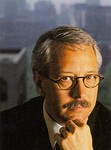Sep14
Where in the World to Invest During a Downturn
Point: Government policy affects foreign investment and innovation. Brazil is poised to do well.
Story: During a recent HSM webinar, Jeffrey Sachs (leading international economic advisor,  Columbia University professor and author of New York Times bestsellers Common Wealth
Columbia University professor and author of New York Times bestsellers Common Wealth and The End of Poverty
), was asked about the near-term prospects for Latin American countries and which countries he thought would do best. Sachs’ answer: Brazil is poised to do best.
For the last 15 years, Brazil has been investing heavily in education. In particular, Brazil made high school available to all citizens and invested in higher education, science and technology. The result is not only a more educated workforce but also a narrowing of the gap between rich and poor and between ethnically divided segments of Brazilian society. In contrast, countries with deep ethnic and racial inequities aren’t unified societies, which leads to mediocre economic performance. Brazil plans to invest $22 billion in science and technology innovation in 2010 and seeks corporations to join in additional investments in the country.
Sachs’ optimism about Brazil echos IBM’s sentiments. IBM is one of the companies investing in Brazil. CEO Sam Palmisano recently met with Brazilian President Luiz Inacio Lula Da Silva to discuss the creation of a “collaboratory” in Brazil. IBM’s collaboratories match IBM researchers with local experts from governments, universities and companies. IBM’s Palmisano praised Brazil’s strategy: “Investments in innovation are critical, especially in a downturn. They can help Brazil and other countries, including the US, realize an economic expansion.” Among the BRIC countries (Brazil, Russia, India, and China), Brazil is seeing the highest growth in business partners that IBM works with, averaging 150% year over year, according to Claudia Fan Munce, managing director of IBM Venture Capital Group.
Action:
* Consider the benefits of locating R&D labs to another country, such as gaining opportunities to see the challenges and solutions not visible from a US-centric perspective.
* When evaluating countries for investment potential, consider their economic policies (business environment, trade policy, investment policy, infrastructure) as well as any cultural barriers (ethnic, religious, gender inequalities) that may be a barrier to integrating the best talent and to fostering economic growth
Sources:
Jeffrey Sachs webinar: Economics for a Crowded Planet
“Big Blue’s Global Lab,” Business Week September 7, 2009
“IBM Bets on Brazilian Innovation” Business Week August 17, 2009
Jeffrey Sachs, Common Wealth: Economics for a Crowded Planet
Jeffrey Sachs, The End of Poverty: Economic Possibilities for Our Time
If you’d like to ask Jeffrey Sachs your own questions, you’ll have the opportunity at the World Business Forum in New York City October 6-7, 2009.
2 Comments »Capital, Growth, Innovation, Opportunity, R&D, Strategy

 My second time at KOOZA, I sat in the second row, so I had a closer look at the costumes. Even from the very last row (where I sat the first time), I remember the dazzling shine of the juggler’s suit. The second time, I had a chance to see the intricacy of all the costumes, which led me to wonder about the R&D that must go into them. The costumes hug tight body lines yet flex with all the contortions the performers make.
My second time at KOOZA, I sat in the second row, so I had a closer look at the costumes. Even from the very last row (where I sat the first time), I remember the dazzling shine of the juggler’s suit. The second time, I had a chance to see the intricacy of all the costumes, which led me to wonder about the R&D that must go into them. The costumes hug tight body lines yet flex with all the contortions the performers make.









